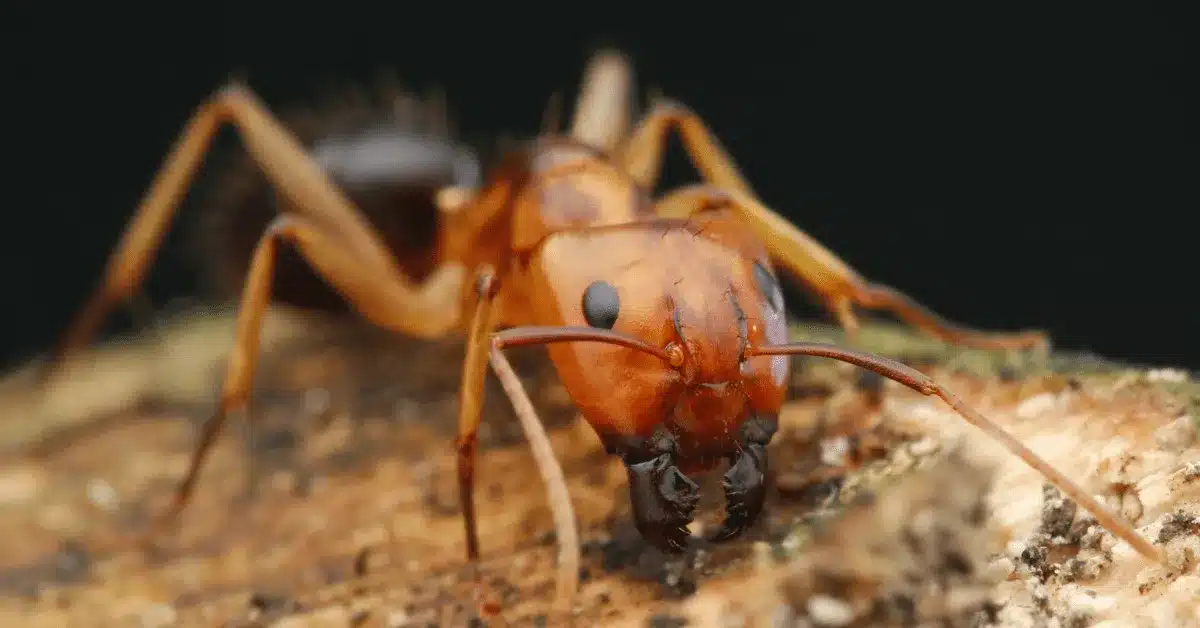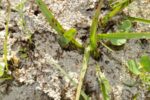
Signs of Carpenter Ant Damage (and How to Get Rid of Them)
Carpenter ants are a common household pest that includes many various species. Here in Florida, we have Florida carpenter ants, Camponotus floridanus and Camponotus tortuganus. These ants are among the most common indoor pests in the state. South Florida homeowners sometimes mistake the ants in their home for termites, which can cause structural damage to your home. Florida carpenter ants nest in wood similar to termites, but they will not eat the wood and typically only build nests in existing voids or soft, rotten wood. While Florida carpenter ants are not a threat to the structural integrity of buildings, these unwanted guests are unsanitary and unsightly. If you know the signs of carpenter ants, you can eradicate these insects from your home with carpenter ant pest control.
How Can You Tell If You Have Carpenter Ants?
Carpenter ants are easily mistaken for other pests. With some careful inspection, you may be able to recognize a Florida carpenter ant. The following signs identify these ants:
- 5.5 to 20 mm in length (females are larger)
- Ash brown to rusty-orange thorax and head
- Some have wings
- Black gaster
- Long, golden body hairs
- 12-segmented body
- Elongated, bullet-shaped terminal segment
- Evenly convex thorax
- Workers bite and spray formic acid
You can distinguish winged termites from winged Florida carpenter ants by the size of their wings. Termites have four wings with fore and hind wings of equal measure, while carpenter ants also have four wings, but they have more sizeable fore wings. Termites also have a straight waist and straight antenna, whereas ants have a pinched abdomen and bent antenna.
Signs of Carpenter Ants
In addition to their appearance, there are other ways to determine if carpenter ants have invaded your space. Read on to learn about signs of an infestation, foraging behaviors, and nesting sites of carpenter ants.
Top 3 Warning Signs of a Carpenter Ant Infestation
Ant workers and swarmers (winged ants) foraging for food
Nesting signs like “frass,” rough wood shavings mixed with dead ants
Rustling sounds of ants excavating nests in rotten wood
What to Look for Indoors
Carpenter ants are most active in your home around dawn and dusk. These are peak foraging hours for the pests. During these times, they will venture into your home in search of sweets or moisture. They may even look for a new nesting site. You often find them in kitchens and bathrooms. They access your home by trailing along outer wires or cables that lead indoors, or they use a tree that touches your roof as a bridge.
What to Look for Outdoors
Carpenter ants may be present on trees or shrubs around your property. If plants produce nectar or are infested with honeydew-producing insects, they attract these common ants. They will also nest in rotted wood within decks and fences, or even tree cavities. This ant also tends to nest in voids, such as utility boxes and sprinkler boxes.
Nesting Sites
Florida carpenter ants can nest in voids both indoors and outdoors. They tend to prefer nesting sites that are:
- Easy to access
- Protected from the elements (heat, flooding, etc.)
- Near food and water sources
- Safe from predators like birds and lizards
You may find debris near their nesting site. This debris consists of any materials they excavated to build their nest and pieces of dead insects, including dead Florida carpenter ants. Florida carpenter ants do not eat undamaged wood for any reason, including nesting. To build a nest, they may remove wood softened by moisture or settle in an existing void in the wood.
Exterior Nesting Sites
- In wooden objects damaged by insects, water, lightning, or fungi
- Under old leaf petioles in palms
- Inside rotting tree stumps and tree holes
- Under bark
- In tree roots
- In old wooden structures (sheds, fences, decks, etc.)
- In debris
- Inside wooden borders of gardens
- In voids in walls, ceramic or concrete decorations, or support pillars
Interior Nesting Sites
- In wall voids
- Under windows and door frames
- Under attic insulation
- Under appliances, especially dishwashers
- Behind wood panels
- In wood furniture
- Around skylights
- In boxes or paper bags
- In closets that get minimal use
- In cracks in floors
- Under bathroom fixtures
- In electrical boxes (fuse, meter, etc.)
If moisture has damaged an interior spot, it is a more appealing nesting site. Carpenter ants nest in areas that are easy for them to access, but if the nest is challenging to access for the homeowner, it can make it nearly impossible to eliminate the pests without professional help.
What Attracts Carpenter Ants in a Home?
Carpenter ants are attracted to food, moisture, and vegetation. These bugs have a sweet tooth, and they prefer sugary carbohydrates like syrup, jelly, honey, and candy. They may also eat meat or pet food. If you have these foods out on your counters, carpenter ants may find them. Food spills on counters, floors, food containers, cabinets, and fridges will lure these pests.
Carpenter ants enjoy damp environments. They like moist, soft wood. Any wooden material that other pests have damaged is appealing to the ants. You may find them in areas of your home that have leaks or are not adequately ventilated.
The vegetation on your property can play a role in whether carpenter ants decide to move in and infest your home. Firewood stacked against the exterior of your home can attract many pests, including carpenter ants. Tree stumps within 15 feet of the perimeter of your home can lead ants to venture indoors. Any tree branches or bushes that act as a bridge to your property will also provide an entry point.
Tips for Preventing Carpenter Ants
If you are concerned about getting carpenter ants or having them return, we have a few tips to help you prevent these invaders from infesting your home:
- Keep floors, surfaces, pantry shelves, and food containers clean of spills
- Secure food items in sealed containers
- Keep trees, bushes, and shrubs trimmed within two feet of your home
- Remove old tree stumps within 15 feet of your home
- Trim tree branches that connect to your home
- Eliminate any leaks or excess moisture
- Caulk any cracks around windows and doors
- Replace water damaged wood
If you have a carpenter ant infestation in your home, following these tips will not eradicate the problem.
How Do I Get Rid of Carpenter Ants?
Carpenter ant infestations can be hard to get rid of. The first step is to identify them. Florida carpenter ants are commonly confused with other pests, making identification tough for anyone but a trained professional. If you misidentify the pest, you may not have the right strategy for eradicating it, giving the infestation more time to grow.
Carpenter ants typically have many nests, referred to as satellite nests. Finding all nests is very important, and can be difficult. Direct treatment of the nest site is the best way to eliminate Florida carpenter ants. You must first locate the site, and then, you must access it and apply a treatment directly. Accessing their nests may not always be easy. Misapplying the treatment may cause the nest to move to another location. The quickest, easiest, and most effective way to rid your property of carpenter ants is to seek out the help of a pest control company.
At Hulett, we are Florida carpenter ant experts. Our experienced and knowledgeable technicians will develop a customized strategy to rid your home of these pesky invaders. A Hulett technician will explain the pest control plan to you and patiently answer your questions. Just call Hulett today for a free inspection.



